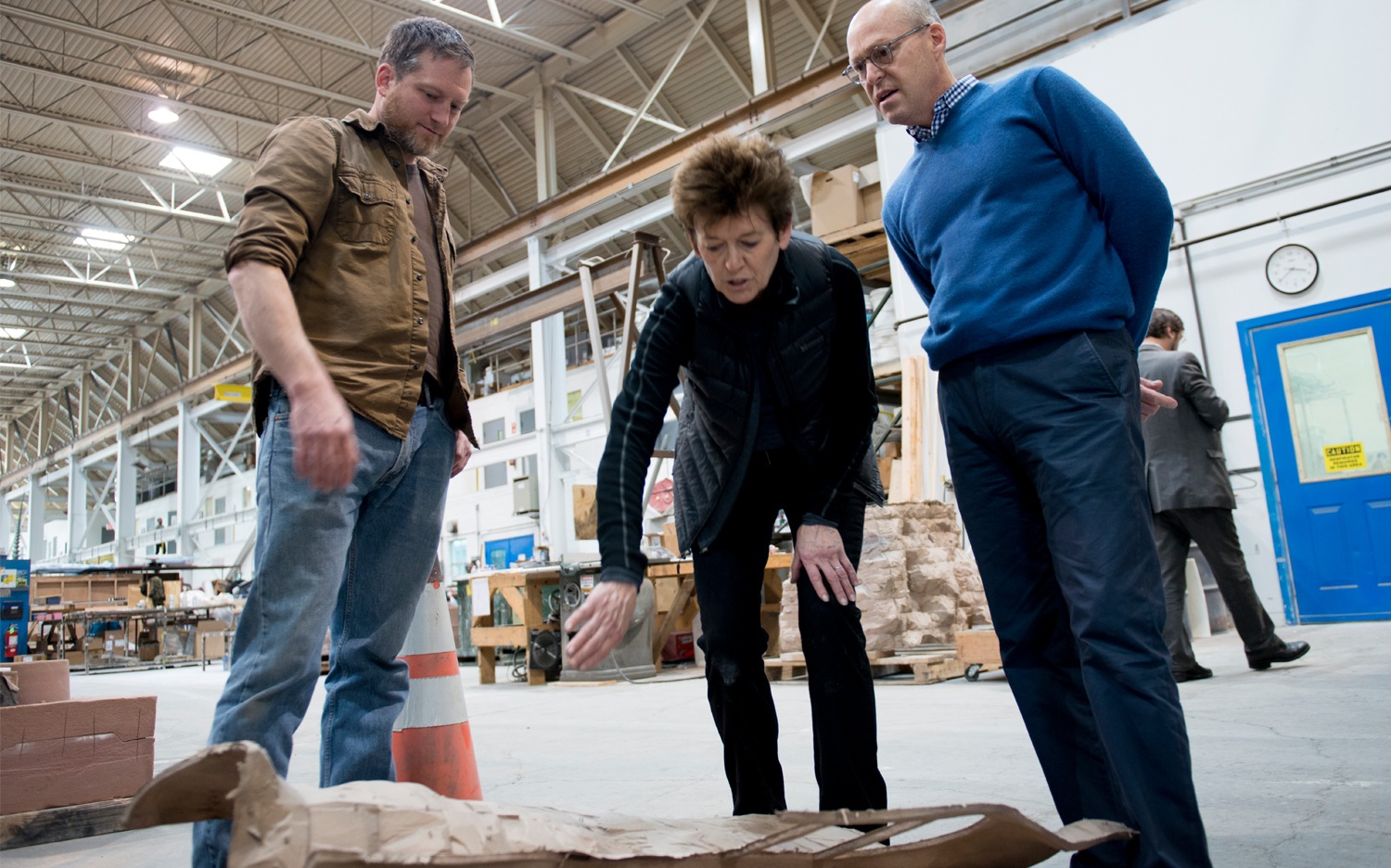Molding in Brooklyn: Ursula von Rydingsvard’s Ona
In the small, dark hours of a late summer morning, sculptor Ursula von Rydingsvard and several workers will drive a large truck into central Brooklyn, quietly and hurriedly diverting traffic to install a bronze sculpture—so massive it will require subterranean reinforcement. The installation process should not take much time, and when the crew leaves, Ona will be in place.
The journey of Ona, from concept to object, spans continents, materials, and decades, but is intrinsically linked to its final resting location: Brooklyn’s Barclays Center. Von Rydingsvard has had studios in the borough for 35 years, first in Williamsburg and more recently in a larger Bushwick space. The artist was initially attracted to Brooklyn because of the availability of inexpensive, large spaces. Since then, she has become a local institution, an immensely hard worker with an unyielding passion for, and commitment towards, her craft. Von Rydingsvard’s sculptures deal with foundation, monumentality, and time—illustrated by elegant, undulating rungs of supple cedar. Born to Polish and Ukranian parents in Nazi Germany, the artist creates large-scale sculptures and installations that utilize her distinctive method of production: a circular saw to mill cedar 4x4s into organic swells of stacked wood. In their colossal scale, von Rydingsvard’s sculptures often take on an intimate, comforting feeling—shapes that reference pods, fabric, spoons or bowls.
We were fortunate to tour the foundry in which von Rydingsvard is working on casting, pouring, and assembling Ona, and to get a preview of the sculpture that will soon be experienced by the throngs of people attending events at the Barclays Center or traveling on the subway in front of which the sculpture will sit. A fine art foundry 70 miles north of Manhattan, Polich Tallix is an immense, prolific space that has previously facilitated the creation of works by artists such as Matthew Barney, Frank Stella, Willem de Kooning, and Louise Nevelson. Ona will be composed of bronze, cast directly off a to-size model that the artist has created. The model is made of layers of cedar rings, the medium Von Rydingsvard is most versed in, though the decision for Ona to be made of metal is equally pragmatic and aesthetic—the bronze will be more durable in its public environment, and the smoother surface will appear “more mellow,” according to Von Rydingsvard. Workers pour glowing, molten bronze into wax molds taken from Von Rydingsvard’s model in a technique known as lost wax casting. A metal stain, known as a patina, is then applied, to give the sculpture a honey-like hue. The artist often applies the color herself, staying true to her vision in her palette choices.
At 19 feet tall, Ona is at once towering and holding, maternal and austere. When Von Rydingsvard speaks about the piece, she refers to it as she or her. “Ona, in Polish, references the female,” the artist says. “Something in movement, anxiety or temperament related to the female.” Von Rydingsvard plays an integral role in the fabrication, noting that she prefers to maintain a “fanatic level of control” within her studio.
When Ona is erected later this summer, Von Rydingsvard envisions levels of interaction and warmth will emanate from the piece. “I do want people to feel like the piece is welcoming,” she says. “I would like to think that people will touch the sculpture to change the patina.” Until then, Ursula von Rydingsvard will continue to dote upon Ona at Polich Tallix, drawing upon its tactility and rich ties to the area in which it will reside.







